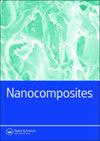Functionalization of electrospun PLA fibers using amphiphilic block copolymers for use in carboxy-methyl-cellulose hydrogel composites
IF 3.7
3区 材料科学
Q2 MATERIALS SCIENCE, COMPOSITES
引用次数: 8
Abstract
Abstract Carboxy-methyl-cellulose (CMC) hydrogels, prepared in the presence of a crosslinker and photoinitiator, were reinforced with 3.7 wt% electrospun PLA fibers to create CMC hydrogel composites. To improve fiber-matrix adhesion, electrospun fiber mats based on hybrids of PLA and amphiphilic block copolymer (BCP) poly(D,L-lactide)-block-poly[2-(dimethylamino)ethyl methacrylate] (PLA-b-PDMAEMA) were produced. The presence of PDMAEMA at the fiber surface induced hydrophilic surface properties, which could be controlled by varying the PDMAEMA chain length. PDMAEMA was quaternized and co-electrospun with PLA fibers, which further enhanced the interaction between fibers and hydrogel matrix via ionic interactions. Physicochemical properties of the electrospun fiber mats and their CMC hydrogel based composites were assessed and revealed a nearly two orders of magnitude increase in modulus. Continuous electrospun fiber mats were chopped into discontinuous fibers to create short fiber reinforced CMC hydrogels. Rheological properties of these reinforced hydrogels incorporating 0.5 wt% discontinuous fibers were evaluated and showed potential as injectable composite systems for biomedical applications. Graphical Abstract用两亲嵌段共聚物功能化电纺PLA纤维用于羧基甲基纤维素水凝胶复合材料
摘要在交联剂和光引发剂的作用下制备羧甲基纤维素(CMC)水凝胶,并用3.7 wt%的静电纺PLA纤维增强CMC水凝胶复合材料。为了提高纤维与基体的粘附性,制备了以聚乳酸和两亲嵌段共聚物(BCP)聚(D, l -丙交酯)-嵌段聚[2-(二甲氨基)甲基丙烯酸乙酯](PLA-b- pdmaema)为基材的电纺纤维垫。PDMAEMA在纤维表面的存在诱导了纤维的亲水性,其亲水性可以通过改变PDMAEMA链长来控制。将PDMAEMA与PLA纤维进行季铵化共静电纺丝,进一步增强了纤维与水凝胶基质之间的离子相互作用。对静电纺纤维垫及其CMC水凝胶基复合材料的理化性能进行了评价,结果表明其模量提高了近两个数量级。将连续电纺丝纤维垫切成不连续纤维,制成短纤维增强CMC水凝胶。这些含有0.5 wt%不连续纤维的增强水凝胶的流变特性被评估,并显示出作为生物医学应用的可注射复合系统的潜力。图形抽象
本文章由计算机程序翻译,如有差异,请以英文原文为准。
求助全文
约1分钟内获得全文
求助全文

 求助内容:
求助内容: 应助结果提醒方式:
应助结果提醒方式:


